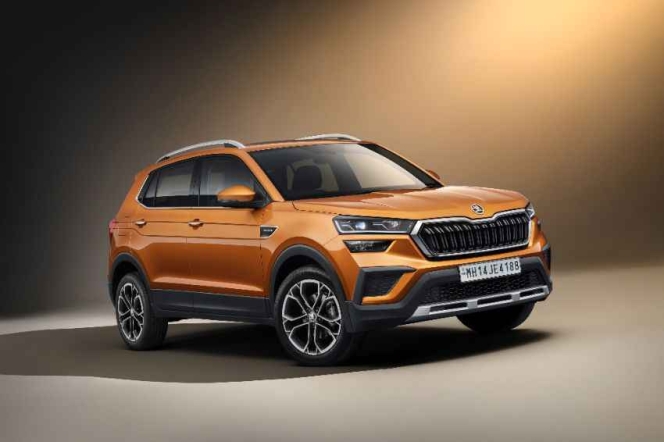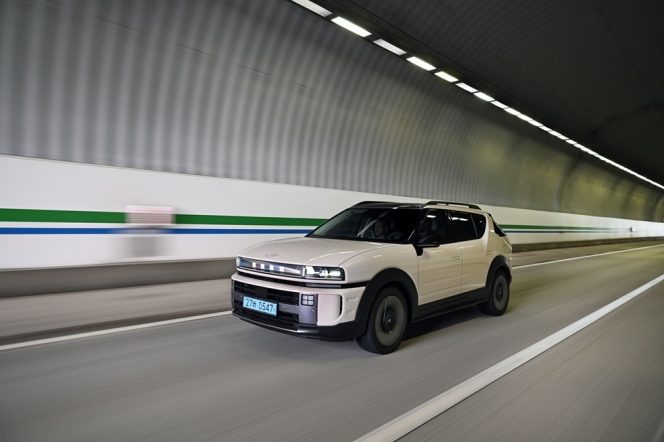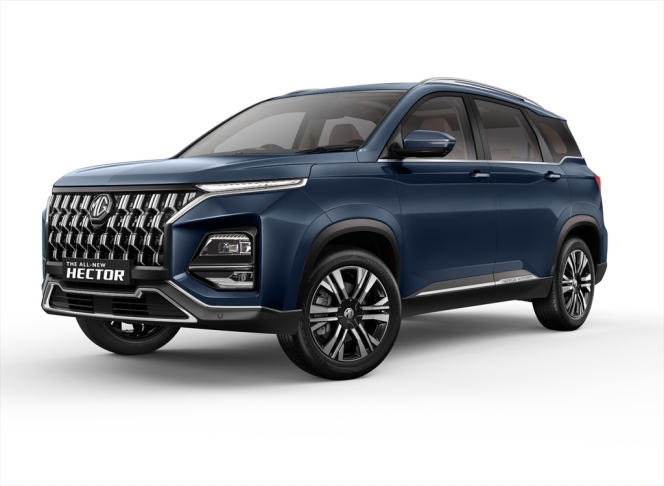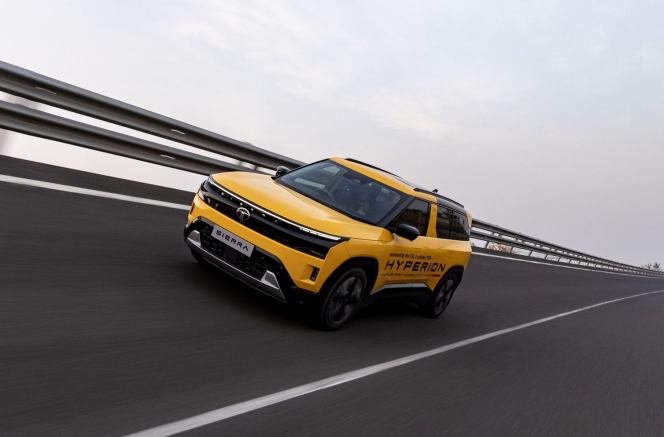
Growing to clock 54,850 units in February 2021 as against the sale of 27,273 units in the corresponding month last year, the compact SUV segment has come to include the participation of almost all the manufacturers in the country today. The Kushaq marks the latest entry, and clearly the most exciting in terms of what it has to offer. A part of the segment that arguably is the most trending as far as passenger vehicles are concerned, the Kushaq is indicative of the direction in which the segment of compact SUVs is heading in. It is was until recently led by Maruti Brezza, a compact SUV segment that shares its platform as well as the assembly line with the Toyota Urban Cruiser. Said to have grown at the expense of mid-size sedans (including compact sedans) and premium hatchbacks, the compact SUV segment consists of no less than 11 offerings today. They are proof of the fact that they are not missed by any manufacturer. Overtaking the Maruti Brezza as the most selling compact SUV in April 2021, the Hyundai Venue has demonstrated how manufacturers like Hyundai, which began by selling high-end SUVs like Terracan and Santa Fe in India, are warming up to the trend of compact SUVs that is unique to India. Clearly so, when one understands that the Renault Duster was born out of the highly popular Renault Clio as a cost-effective crossover in Europe. It soon challenged more premium offerings there like the Skoda Yeti. Highlighting Indian automobile buyers’ psyche of cost consciousness, the compact SUVs like Kushaq are highlighting new growth prospects, technologies and features.

Tech and price trends
Considering the starting price of Brezza and Venue at INR 7.39 lakh and INR 6.92 lakh approximately, the Kushaq, at a starting price of Rs.10.5 lakh is certain to appear costly. Zac Hollis, Skoda’s director of Sales, Service & Marketing, has informed through a tweet that even the basic ‘Active’ variant carries a significant additional equipment over its competitors (see the comparison chart). The Kushaq is being offered with a TSI technology engine right at the basic level, he has added. Being offered with a cylinder deactivation technology that shuts two out of the four cylinders by sensing the load (via the accelerator pedal input) to ensure superior fuel efficiency and lower carbon footprint, the Kushaq reflects a technology trend that is taking shape among compact SUVs as new products join the fray. So, if the Renault Duster and one or two other vehicles in the compact SUV segment offer a turbo-petrol engine like the Kushaq does, right at the basic level, a majority offer a MPI engine. The technology trend concerning compact SUVs ironically also highlights a stress on petrol engines. The BSVI emission norms and decreasing price gap between petrol and diesel are said to be the reasons. Presenting the superior drive-ability and fuel efficiency of diesel are the turbo-petrol (also termed as Gasoline Direct Injection) models and variants. In the Kushaq, Skoda has termed the technology coinage as TSI.
If the compact SUV offerings like the Kushaq, Brezza, Toyota Urban Cruiser, Duster and many others highlight a rising trend of petrol only variants in-line with the reasons mentioned above, an amount of technological exploration is on in the area of transmissions. As urban buyers warm up to compact SUVs and make a shift over from sedans and hatchbacks, almost every model being offered on the market is available with an option of an automatic gearbox. The highlight of this trend is the mushrooming of dual-clutch automated transmissions that support sporty and agile driving experience. As the first product to spring from Volkswagen Group’s India 2.0 project (see box), the Kushaq, is available with a choice of the much acclaimed DSG automated transmission. Apart from just one or two vehicles in its segment offering a CVT ‘auto’ transmission, and what could be termed as conventional ‘torque convertor’-based auto-box, many compact SUVs are offering their version of DSG automated transmission by calling them as DCT (Dual-Clutch Transmission). Most basic trims in the segment are offered with a 5- or 6-speed manual transmission.

Feature trends
Almost all the compact SUVs being offered in India are front-wheel drive with the engine and trans-axle located transversely at the front. The only four-wheel drive compact SUV, Duster, has already lost its arrangement to power both the axles. A look at the powertrain arrangement of the compact SUVs and their monocoque body construction, and it will be clear that they could be described as front-wheel hatchbacks with ‘lift-up’ suspension, an appropriate body style, and bigger dia. wheels and higher ground clearance. Most compact SUVs are equipped with McPherson strut suspension at the front and a twist beam axle at the rear. The Kushaq is no exception. It is keen to set itself apart from the Korean, Japanese and homegrown offerings like the Mahindra XUV300 with safety, quality, design and technology, according to Hollis. Offering TSI engines and DSG transmission, which were until now found on more premium offerings, the Kushaq, reflects its technological composition and the fact that it is the first vehicle to roll-out of the India-centric project set up with an investment of Euro-one billion, in its price positioning. The compact SUV with the lowest starting price – the Hyundai Venue at Rs.6.92 lakh approximately, offers a 1.2-litre MPI petrol engine at the basic level. It is mated to a 5-speed manual gearbox.

When it comes to features, none of the compact SUVs on offer, including the Kushaq, is immune to the fact there is a direct bearing of price. The basic variants get what could be termed as ‘essential’ features whereas the top-end variants get a variety of ‘bells and whistles. Put together all the them and they include voice command, LED headlamps and tail lamps, rear view monitor, airbags, ABS and EBD, electronic parking brake, air purifier, start/stop, telematics, sunroof, TPMS, ESC, rear parking sensors, VSM, hill-start assist, cruise control, keyless entry, rear parking camera, touchscreen infotainment system and others. A look at the features offered by the compact SUVs, and a clear trend is evident in terms of technology. This technology pertains to an ability to stay connected with an increasingly smarter use of telematics. Many compact SUVs offer satellite navigation, tracking and connectivity features that are unique to their manufacturers. Ford, for example, offers the SYNC connectivity technology on the EcoSport. What makes it interesting is that a lot of software work relating to the connectivity features and various other functions of these compact SUVs has happened in India. If the Brezza’s local content amounts to 98 percent, that of the Kushaq is 93 percent.

Summing up
Emerging as a hot-bed of style and technology (the Tata Nexon is also available as an electric compact SUV and the MG Hector as a hybrid compact SUV), the trend pertaining to compact SUVs is getting clearer and clearer with every new product introduction. It is underlying quality, safety, comfort, localisation (read as Atmanirbhar Bharat) and an ability to control costs.
Hyundai Nexo Secures 5-Star Euro NCAP Safety Rating
- By MT Bureau
- December 16, 2025

South Korean auto major Hyundai Motor Company has announced that its all-new Hyundai Nexo fuel-cell electric SUV has bagged 5-star crash test rating in the latest Euro NCAP safety assessment.
The Nexo, Hyundai’s hydrogen fuel-cell electric SUV, emits only water vapor and is central to the company’s push for zero-emission mobility. The top rating follows five-star Euro NCAP results for the Ioniq 5, Ioniq 6 and Ioniq 9. The rating validates Hyundai’s performance in crash protection and its suite of safety and driver-assistance technologies.
Euro NCAP, Europe’s independent organisation for evaluating vehicle safety, assesses vehicles across four areas: adult occupant protection, child occupant protection, protection of vulnerable road users and safety assistance technologies.
The new Hyundai Nexo achieved results across all four areas, including:
90 percent in Adult Occupant Protection.
85 percent in Child Occupant Protection.
In adult occupant tests, the passenger compartment remained stable in the frontal offset test, with protection of the knees, femurs, and all critical body regions for both driver and passenger. The Nexo performed well in the full-width rigid barrier test, achieved maximum points in the side barrier test and provided effective far-side occupant protection via its centre airbag. Whiplash protection for both front and rear seats was rated as good in rear-impact evaluations.
Child occupant protection performance was strong. The six- and 10-year-old dummies showed protection in all critical body areas in both frontal and side-impact tests, earning maximum points.
Additional safety features noted by Euro NCAP include an advanced eCall system and post-crash secondary impact prevention technology.
This achievement underlines Hyundai’s long-term commitment to hydrogen technology and safety innovation. The previous generation NEXO was the first fuel-cell electric vehicle tested by Euro NCAP in 2018, also achieving a five-star rating under the standards at that time.
JSW MG Motor India Introduces All-New Hector SUV At INR 1.19 Million
- By MT Bureau
- December 15, 2025

JSW MG Motor India has introduced the all-new MG Hector SUV featuring a revised exterior with new front and rear bumper designs, a new grille design and new alloy wheels at prices starting INR 1.19 million (ex-showroom) for limited units. The SUV comes in two new colours – Celadon Blue and Pearl White.
The interiors feature a Dual Tone Ice Grey Theme in the 5-seater trim and Dual Tone Urban Tan for the 6 and 7-seater trims. Exterior details include the new Aura Hex Grille, a hexagonal structure that symbolises strength and precision. New Aura Sculpt Bumpers at the front and rear deliver a muscular, assertive stance and also the Aura Bolt Alloy Wheels.
The all-new Hector's infotainment system, featuring a 14-inch HD portrait touch screen, receives a performance boost through Smart Boost technology. The system features the i-SWIPE Touch Gesture Control, enabling intuitive multi-touch operations for AC, music and navigation. Further convenience is provided by the Digital Bluetooth Key and Key Sharing capability along with Predictive Maintenance Alerts, Remote AC Control. A Full Digital Cluster with a 17.78 cm Embedded LCD Screen provides a driver interface.
Anurag Mehrotra, Managing Director, JSW MG Motor India, said, “The Hector was our maiden nameplate and quickly became synonymous with the MG brand, emerging as one of India’s most loved SUVs with 150,000 customers since its debut. With the All-New MG Hector, we take this legacy a notch higher by enhancing its design, comfort, and technology, offering an unmatched value proposition. We believe truly advanced mobility should not be an exclusive luxury reserved for the few. With this superior package, The All-New MG Hector will further democratize technology while setting a new benchmark for what a premium SUV can deliver.”
The new Hector also features a 360deg HD Camera with Wheel View, offering surround visibility along with tyre-level perspective. In terms of standard it gets ABS, EBD, ESP, TCS, Hill Hold Control and Brake Assist. The SUV is powered by a 1.5L Turbocharged Petrol engine (CVT & MT) offering 143 PS Power and 250 NM Torque.
Launched in 2019 as India’s First Internet Car, the MG Hector includes features such as a dual-pane panoramic sunroof, a 35.56 cm (14-inch) HD infotainment system, 8-colour Ambient Mood Lighting, and MG’s advanced i-SMART connected technology with 70+ features, and an advanced ADAS suite. Further features include Push Button Engine Start/Stop with a Smart Key and Anti-Theft Immobilisation, automatic powered tailgate, air purifier with PM 2.5 filter, rain sensing wipers, Remote Control for Audio, AC & Mood Light in i-Smart App and front parking sensors.
The prices for the diesel variant of the all-new Hector SUV will be announced next year.
- Tata Sierra
- India Book of Records
- maximum fuel efficiency
- 12 hours
- certified run
- NATRAX
- Indore
- exceptional mileage
- surpass
- national benchmark.
Hyperion-Powered Tata Sierra Sets New Fuel Efficiency Benchmark
- By MT Bureau
- December 11, 2025

The Tata Sierra has entered the India Book of Records for maximum fuel efficiency in 12 hours. In a certified run at NATRAX Indore, the Sierra delivered an exceptional 29.9 kmpl mileage, surpassing the previous national benchmark. The feat was executed by the Pixel Motion team, that drove the 1.5-lire Hyperion-engine powered Sierra continuously from 7:00 am to 7:00 pm on 30 November 2025 with brief halts for driver swaps. The record was officially validated the same day.
The new 1.5-litre Hyperion petrol engine, engineered to deliver high efficiency without compromising refinement, performance or drivability, has an advanced combustion system, torque-rich performance band and friction-optimised architecture.
The compact SUV also achieved a top speed of 222 kmpg at the track under specified test conditions.
“Setting a national efficiency record so early in the Sierra’s journey is a proud moment for us. The Hyperion engine platform was built to push the boundaries of what petrol powertrains can achieve, and this milestone validates that effort. It strengthens the Sierra’s value proposition for customers and underlines TMPV’s commitment to bringing advanced, efficient and future-ready technologies to the market," said Mohan Savarkar, Chief Product Officer, Tata Motors Passenger Vehicles.
Škoda UK’s Matthew Bowden Shifts To Global Sales; Eric Boutin Named Successor
- By MT Bureau
- December 10, 2025

Matthew Bowden is concluding a successful four-year tenure as Director of Škoda UK, departing to assume the role of Head of International Sales for Škoda Auto. Under his leadership, the UK market achieved significant growth, rising to become the brand's third largest global market and consistently exceeding performance records while maintaining a market share beyond four percent.
His successor, Eric Boutin, will join the Volkswagen Group UK board of management as Director of Škoda UK in the first quarter of 2026. Boutin brings extensive international experience from pivotal markets including Canada, China and United States. He is currently responsible for Škoda Auto's global customer experience programme, with direct oversight of the worldwide retail network and omnichannel integration, and is spearheading the brand's overarching customer centricity transformation.

This strategic leadership transition aims to leverage Bowden's commercial acumen on a global scale while injecting Boutin's specialised customer-focused expertise into the UK operations.
Damien O’Sullivan, Managing Director, Volkswagen Group UK, said, “Matthew has made a significant contribution towards Škoda’s evolution and growth over the past four years. I’m grateful for all he’s done for the brand and the Group and wish him well in his new role. I’m looking forward to welcoming Eric to the UK board of management and am sure his global experience and customer focus will support the brand’s future ambitions and Human Touch proposition.”






Comments (0)
ADD COMMENT